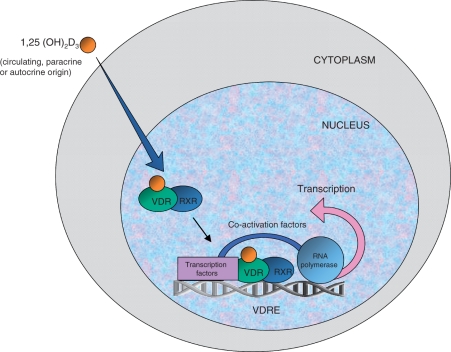Figure 2.
Ligand-dependent gene transcription by 1,25-dihydroxyvitamin D3 (1,25(OH)2D3). Lipid soluble 1,25(OH)2D3 from serum, autocrine or paracrine sources enters the target cell and binds to the nuclear vitamin D receptor (VDR). This induces a conformational change and promotes heterodimerization with the retinoid X receptor (RXR). The VDR/RXR has an increased affinity for the vitamin D responsive element (VDRE). VRDE is a specific sequence of nucleotides in the promoter region of the vitamin D responsive gene. Binding of the VDR/RXR complex to the VDRE attracts a complex of co-activator proteins connecting VDRE with RNA polymerase II. Gene transcription then occurs, producing mRNA transcripts, which leave the nucleus for translation into the coded protein in the cytoplasm.

